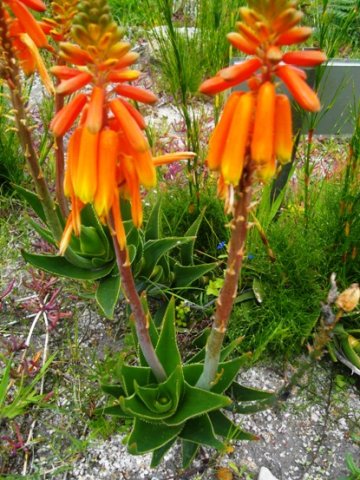Aloiampelos juddii

Author: Ivan Lätti
Photographer: Thabo Maphisa
Aloiampelos juddii, previously known as Aloe juddii, is not found in the older books on South African aloes as it was only discovered in the fynbos near Cape Agulhas in 2004. This aloe is a low-growing leaf succulent that produces solitary or branching stems of 1 cm in diameter. The plants are up to 60 cm tall and clump to a diameter of about 80 cm. Old plants develop thick, underground stem bases, or caudices, initially succulent, later nearly woody.
A. juddii has a well-known relative by resemblance in A. commixta, another fynbos species found on Table Mountain. Both these rambling aloes have numerous creeping stems that branch and sprawl over rocks. A. commixta is described by Reynolds as closest related to A. striatula, making the threesome a notable group. They all migrated botanically with the rest of the rambling aloes from the Aloe genus to Aloiampelos, their own generic home. This happened around 2013.
Like new-born royalty, for whom naming may sometimes be a bit overdone, this species was given the rather ostentatious Afrikaans name of baardskeerdersbosvuurpylaalwyn. Literally translated, this would be “beard shaver’s bush rocket aloe”, one of the longest names to bear in the blooming business. Fortunately, the plant takes no notice and retains no emotional scarring, as sometimes happens to people when their parents don't take proper care in naming them. Recently acquired identities are evidently as mutable as old ones.
This name at least gives a clue as to the plant’s distribution area, Baardskeerdersbos being a rustic little vacation destination in the far south, marketed as a “heavenly hamlet”. The species is endemic to the coastal mountains between Gansbaai and Baardskeerdersbos in the Western Cape. A second, shorter common name, koudebergaalwyn, (cold mountain aloe) is useful for less formal occasions.
The habitat is Overberg sandstone fynbos, the plants favour rocky slopes facing southeast. The habitat population is deemed endangered, due to invasion by exotic, alien vegetation (Reynolds, 1974; iNaturalist; Wikipedia; www.gansbaai.com; https://pza.sanbi.org; http://redlist.sanbi.org).

